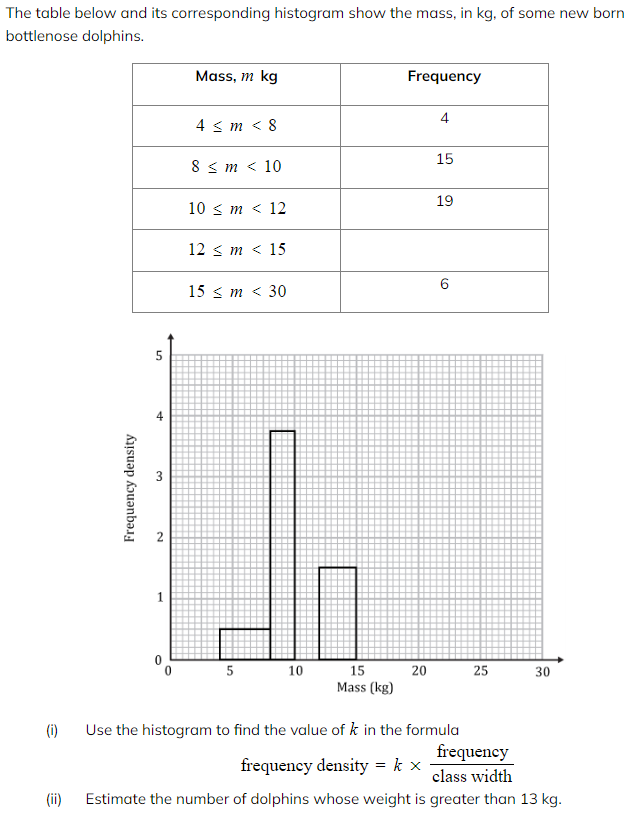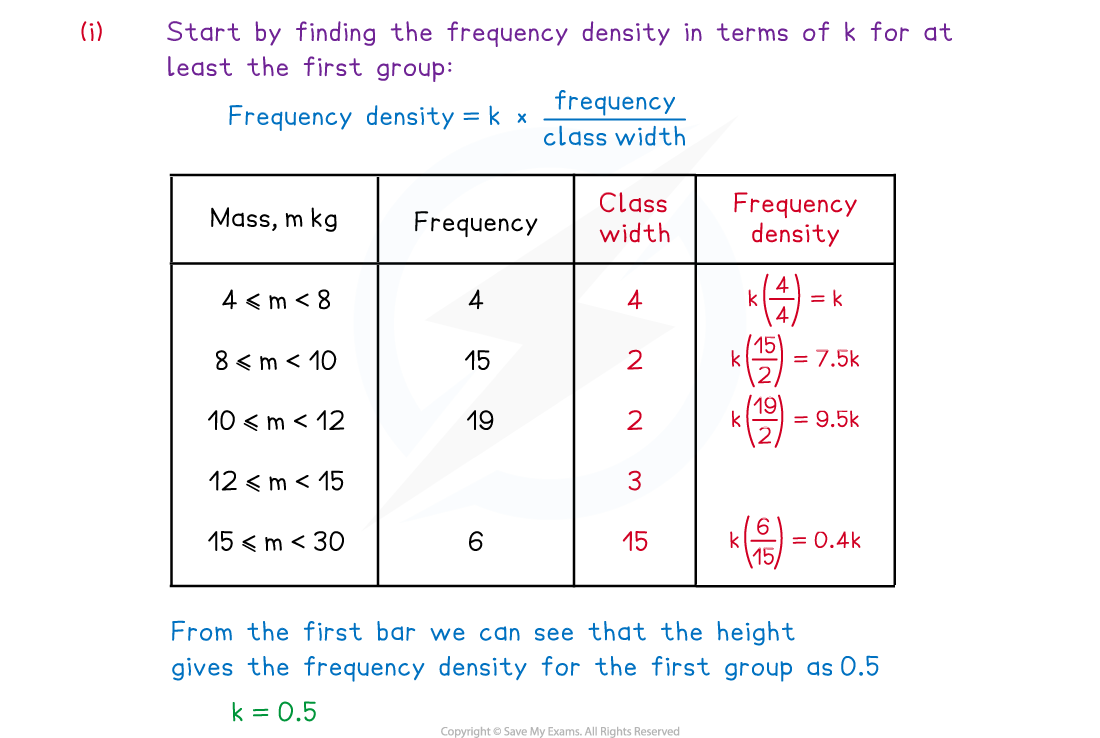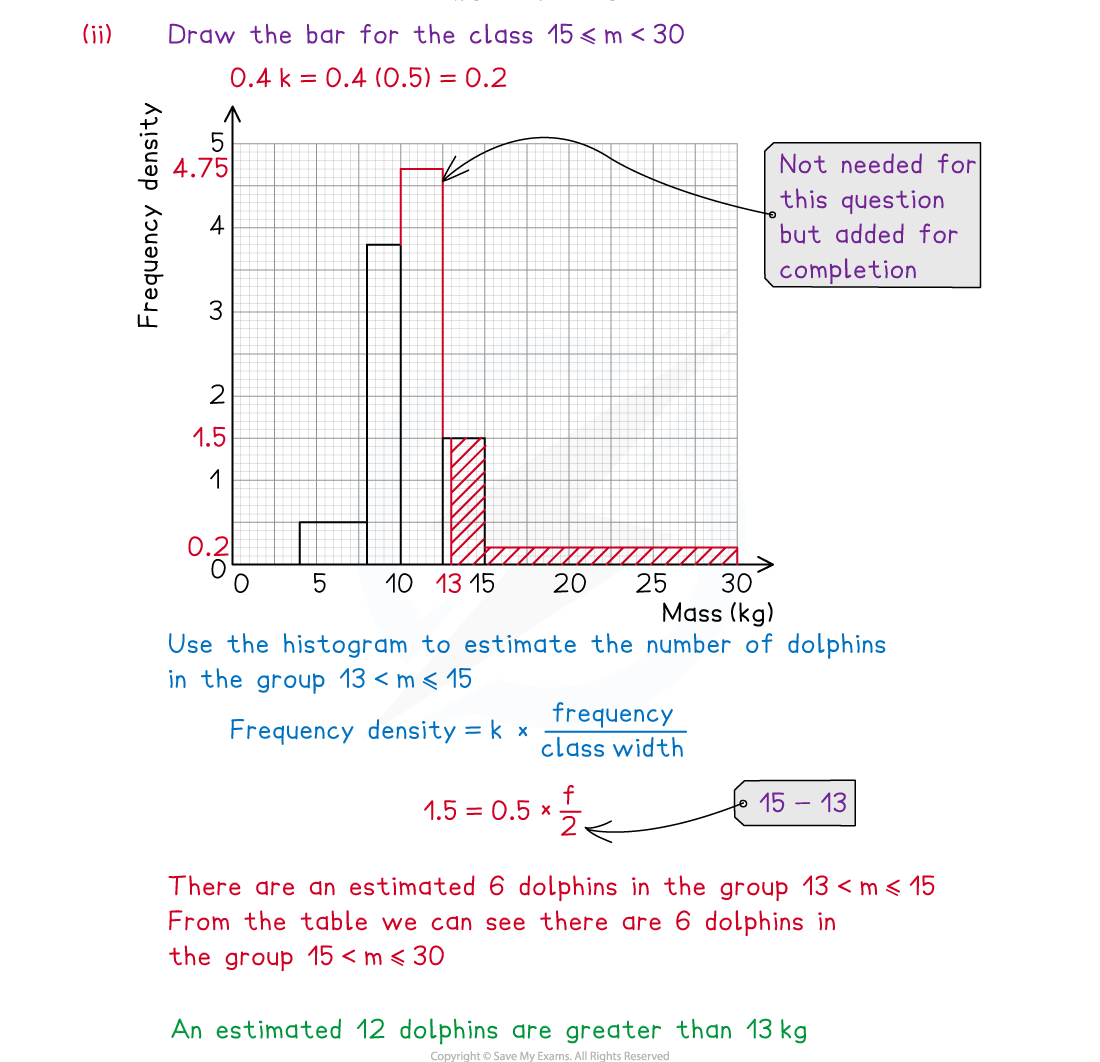- 翰林提供学术活动、国际课程、科研项目一站式留学背景提升服务!
- 400 888 0080
AQA A Level Maths: Statistics复习笔记2.2.3 Histograms
Histograms
What is a histogram?
- A histogram is similar to a bar chart but with some key differences
- A histogram is for displaying grouped continuous data whereas a bar chart is for discrete or qualitative data
- There will never be any gaps between the bars of adjacent groups in a histogram
- Whilst in a bar chart the frequency is read from the height of the bar, in a histogram the height of the bar is the frequency density
- On a histogram frequency density is plotted on the y – axis
- This allows a histogram to be plotted for unequal class intervals
- It is particularly useful if data is spread out at either or both ends
- The area of each bar on a histogram will be proportional to the frequency in that class
What are the key features of a histogram?
- You will not be asked to draw a histogram but you may have to add information to one so you should make sure you are familiar with the process for drawing one
- Step 1. Always check that there are no gaps between the upper boundary of a class and the lower boundary of the next class
- If there are gaps you will need to close them by changing the boundaries before carrying out any calculations
- Consider whether the values are rounded or truncated before closing the gaps
- If there are gaps you will need to close them by changing the boundaries before carrying out any calculations
- Step 2. Find the class width of each group by subtracting the lower boundary from the upper boundary
- Step 3. Calculate the frequency density for each group using the formula:

- Step 4. The histogram will be drawn with the data values on the x – axis and frequency density on the y – axis
- Remember that the scale on both axes must be even, although the class widths may be uneven
- Both axes should be clearly labelled and units included on the x – axis
- Most often, the bars will have different widths
- Remember that the scale on both axes must be even, although the class widths may be uneven
- Occasionally you will be asked to add a frequency polygon to the histogram
- This is done by joining up the midpoints at the top of each bar
- You should not join up the first or last midpoint to the x – axis (it is not really a polygon!)
How do we interpret a histogram?
- It is important to remember that the y – axis does not tell us the frequency of each bar in the histogram
- The area of the bar gives information about the frequency
- Most of the time, the frequency will be the area of the bar and is found by multiplying the class width by the frequency density
- Occasionally, the frequency will be proportional to the area of the bar
 In these cases more information will be given to help you find the value of k
In these cases more information will be given to help you find the value of k
- You may be asked to find the frequency of part of a bar within a histogram
- Find the area of that section of the bar using any information you have already found out
- You will need to have found the value of k first
Worked Example



Exam Tip
- Remember that the area of a bar in a histogram is not always the frequency itself but could be proportional to the frequency. Look carefully at the scales on the axes, it will rarely be a simple 1 unit to 1 square.
转载自savemyexams

最新发布
© 2025. All Rights Reserved. 沪ICP备2023009024号-1









